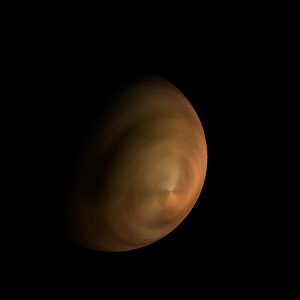|
|
Space Astro
|
Info for exoplanet "Nixait"
| Scientific (actual) data |
|---|
| Name | 2MASS J1146+2230 b |
| Planet status | Confirmed |
| Planet mass | 60 |
| Semi major axis | 7.6 |
| Discovered | 2001 |
| Updated | 2024-06-30 |
| Publication | Published in a refereed paper |
| Detection type | Imaging |
| Alternate names | 2MASS J11463449+2230527 b |
| Right ascension | 176.64° |
| Declination | 22.52° |
| Star distance | 26.2 |
| Wikipedia article | 2MASS J1146+2230 b |
Back
| |
| Fictional info (?) |
|---|
| Suggested name | Nixait |
| Planet type | Huge cold gas giant |
| Having almost no atmosphere to retain heat, it has surface temperatures that vary diurnally more than on any other planet in its solar system, ranging from 175°K (-98°C) at night to 1120°K (847°C) during the day across the equatorial regions.
A prominent result is the "great brown spot", a giant storm that is known to have existed for centuries since it was first seen by telescope. |
| Atmosphere | Methane | 91% |
| Ethane | 7.5% |
| Carbonyl sulfide | 0.84% |
| Argon | 0.18% |
| Carbon dioxide | 0.17% |
| Atmospheric pressure | 0.09 bar |
 |
| Moon | Hyrmone Aopa Ska | Large potato shaped crater-filled asteroid |
| Aitmedeia | Very small irregular crater-filled comet |
| Helaris Fen | Small potato shaped rocky comet |
| Google search for Nixait |
|
Website by Joachim Michaelis
|
|
|
|